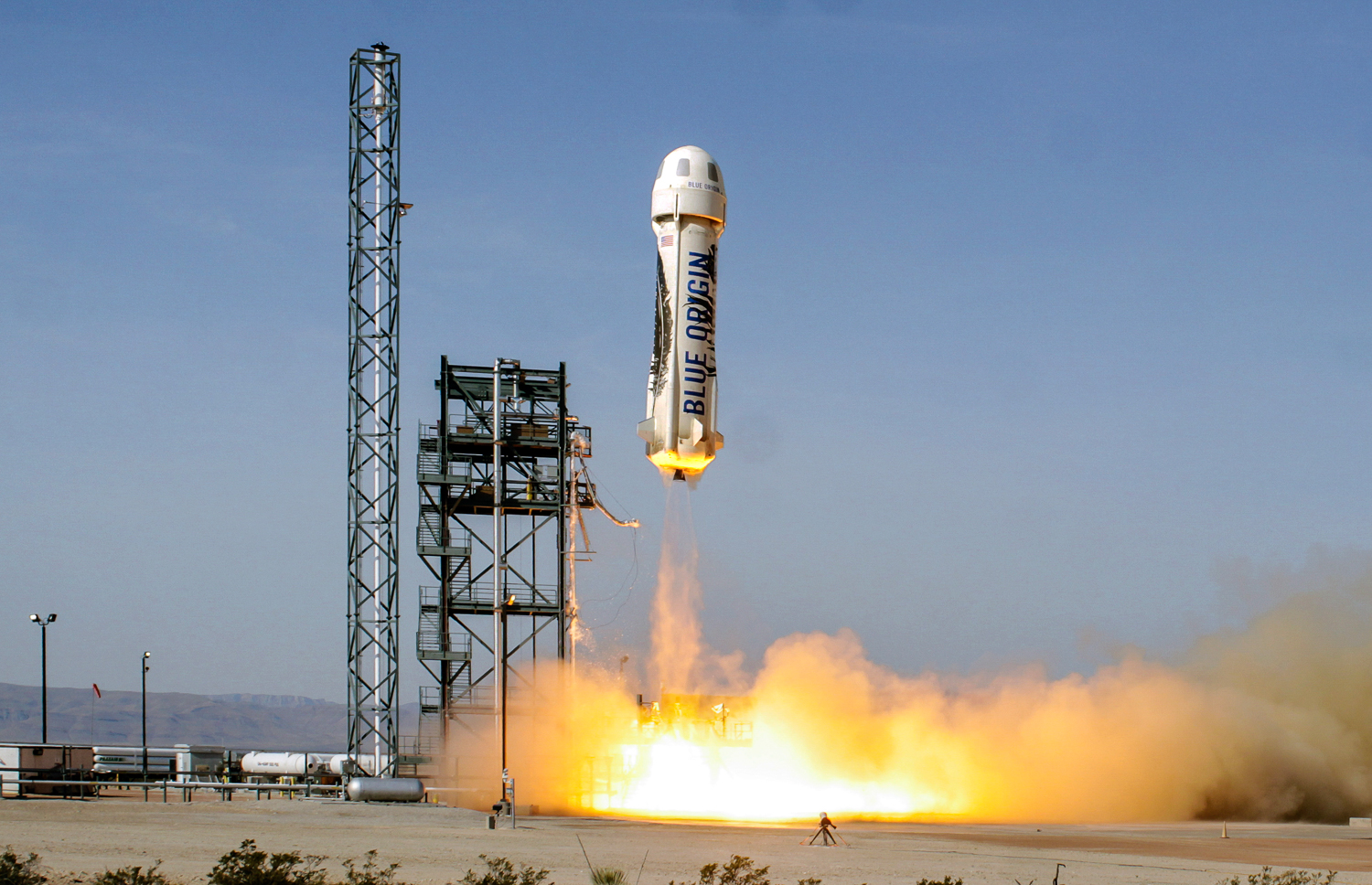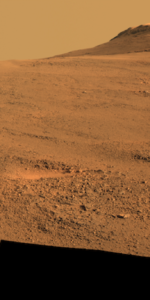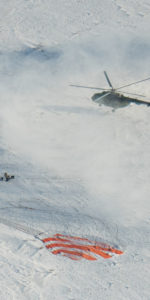
Billionaire entrepreneur Jeff Bezos and his Kent, Wash.-based company Blue Origin conducted a successful flight test of a new ‘2.0’ version of their New Shepard crew capsule on Tuesday, Dec 12, at the company’s west Texas launch site.
Blue Origin has been making progress at a steady rate the last few years in developing and testing a fully reusable, suborbital New Shepherd flight system and making plans to resurrect dormant Cape Canaveral Launch Complex-36 (LC-36) to fly it from.
Tuesday’s flight test was the seventh for New Shepherd (mission 7, or M7), but was the first flight of the ‘capsule 2.0’, which features large windows measuring 2.4 feet wide and 3.6 feet tall.
An instrumented test dummy named “Mannequin Skywalker” was the sole passenger.
“Our New Shepherd flight test program is focused on demonstrating the performance and robustness of the system,” said Bezos in an email March 29. “In parallel, we’ve been designing the capsule interior with an eye toward precision engineering, safety, and comfort.”
The New Shepherd suborbital rocket and crew capsule caters to paying space tourists on short duration flights, not full orbits of the Earth – but rather 10 minutes or so of experiencing spaceflight and competing directly with Virgin Galactic in the process.
It is designed to accommodate six passengers, or crew, and provides 530 cubic feet interior volume and six large windows to provide “unparalleled views”—the largest ever on a spacecraft, according to Blue Origin.
However, it can also fly small science payloads up to 50 pounds, and they already have; M7 also included 12 commercial, research and education payloads onboard.

“Our New Shepard system is ideal for microgravity physics, gravitational biology, technology demonstrations, and educational programs. You’ll also have the opportunity for Earth, atmospheric, and space science research,” notes Blue Origin on their website.
“Today’s flight of New Shepard was a tremendous success,” said Blue Origin CEO Bob Smith. “It marks the inaugural flight of our next-generation crew capsule as we continue step-by-step progress in our test flight program.”
In a June 2016 flight test, New Shepherd was launched to 331,501 feet (101,041 meters), or 62.7 miles (101 kilometers), barely clearing the universally agreed 62-mile boundary of space before starting the descent back to Earth. Under the power of only two chutes, with one chute intentionally failed, the capsule descended at 23 mph before firing its retrorocket, only 7 mph faster than with all three chutes deployed.
The capsule and booster was put through another test again on Oct. 5, 2016, this time performing an in-flight abort test of the capsule’s full-envelope escape system, which is designed to quickly propel the crew capsule to safety if a problem is detected with the booster.

In the M7 test this week, the crew capsule 2.0 reached an apogee of 322,405 feet AGL/326,075 feet MSL (98.27 kilometers AGL/99.39 kilometers MSL). The booster reached an apogee of 322,032 feet AGL/325,702 feet MSL (98.16 kilometers AGL/99.27 kilometers MSL).
Max speed reached on ascent was Mach 2.94, and even faster on the way down at Mach 3.74.
Soon, people will be able to purchase tickets to fly on Bezos’ New Shepherd rocket and capsule for a suborbital experience, although the price tag as of now is still not known. You can visit Blue Origin’s website for an idea of their “astronaut experience” HERE, and sign up for email updates as things come together for those first crewed flights.
The company hopes to begin flight tests with astronaut crews sometime in 2018, with the first commercial flights lifting off in 2019 from Florida’s Launch Complex 36, which was selected as their launch site by Bezos due to the amount of talent and skills specific to spaceflight that exist on the Space Coast. This also gives the company manufacture, assembly, and launch facilities all in the same place, bringing over 300 new full-time jobs to the Cape’s local economy in the process.
FOLLOW AmericaSpace on Facebook!
.





